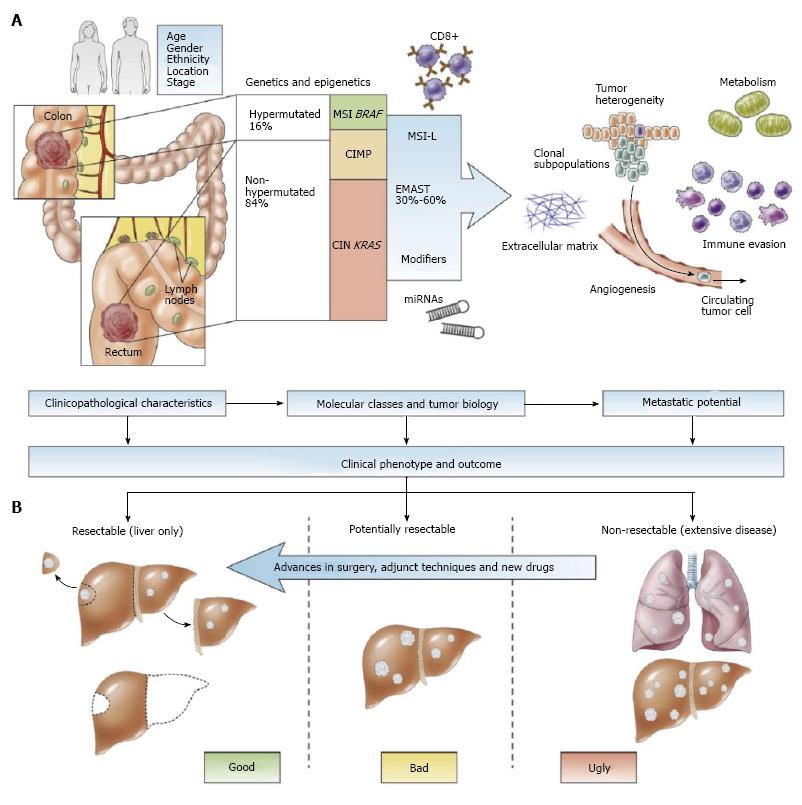Copyright
©The Author(s) 2017.
World J Gastrointest Oncol. Mar 15, 2017; 9(3): 98-104
Published online Mar 15, 2017. doi: 10.4251/wjgo.v9.i3.98
Published online Mar 15, 2017. doi: 10.4251/wjgo.v9.i3.98
Figure 1 Clinical and molecular influence on cancer biology in colorectal liver metastases.
A: Clinical behaviour of colorectal cancer is determined by several factors, including demographic data (age, gender, race) and tumor presentation (location, stage) and timing of presentation of metastasis (synchronous or metachronous). Embedded in the cancer cells are the molecular pathways, which follows distinct forms of genomic instability yet with partly overlapping areas. Hypermutated cancers belong to the microsatellite instable (MSI) cancers and in part the CpG-island methylator phenotype (CIMP) cancers. Non-hypermutated cancers follow in large parts the chromosomal instability (CIN)-driven pathways, often involving KRAS mutations from an early stage. The propensity to develop metastasis may possibly be modified through the elevated microsatellite alterations at selected tetranucleotide repeat (EMAST) and associated mechanisms, such as regulation of microRNAs or activity and numbers of CD8+ immune cells. Finally, the microenvironment contains numerous factors that may facilitate or propagate metastasis to invade, spread and settle in a new organ sites, particularly the liver and the lungs; B: Determined by the clinical presentation, the genetic traits and molecular mechanisms, the prognosis in colorectal liver metastasis is related to resectabilty for long-term survival. Reprinted from Søreide K, Watson MM, Hagland HR. Deciphering the Molecular Code to Colorectal Liver Metastasis Biology Through Microsatellite Alterations and Allelic Loss: The Good, the Bad, and the Ugly. Gastroenterology 2016 Apr; 150 (4): 811-814, Copyright (2016), with permission from Elsevier.
- Citation: Veen T, Søreide K. Can molecular biomarkers replace a clinical risk score for resectable colorectal liver metastasis? World J Gastrointest Oncol 2017; 9(3): 98-104
- URL: https://www.wjgnet.com/1948-5204/full/v9/i3/98.htm
- DOI: https://dx.doi.org/10.4251/wjgo.v9.i3.98









